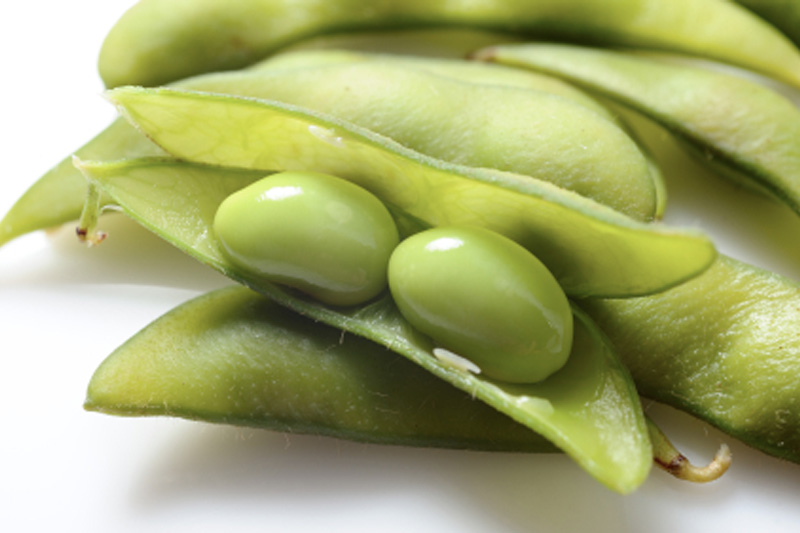Investing.com - U.S. grain futures were mixed on Wednesday, with soybean and corn prices pausing after the previous session’s sharp rally made on the back of ongoing concerns over U.S. crop prospects.
On the Chicago Mercantile Exchange, soybeans futures for July delivery traded at USD15.1025 a bushel, little changed on the day.
The July contract held in a range between USD15.0338 a bushel, the session low and a daily high of USD15.1888 a bushel.
The front-month July contract rallied 2.2% on Tuesday after the U.S. Department of Agriculture said that 44% of the U.S. soy crop was planted as of May 26, up from 24% in the preceding week, but still significantly below the 87% planted in the same week a year earlier.
The five-year average for this time of year is 61%.
The USDA report came out a day later than usual due to Monday’s Memorial Day holiday in the U.S.
The July soy contract rallied to hit a six-month high of USD15.4637 a bushel on May 23, amid ongoing concerns over U.S. crop prospects.
Meanwhile, corn futures for July delivery traded at USD6.6400 a bushel, down 0.25% on the day. The July contract was stuck in a tight range between USD6.6275 a bushel, the daily low and a session high of USD6.6688 a bushel.
The front-month July corn contract rallied to hit a seven-week high of USD6.6937 a bushel on Tuesday after the USDA said that 86% of the U.S. corn crop was planted as of last week, up from 71% planted in the preceding week.
Approximately 99% of the U.S. corn crop was planted in the same week a year earlier, while the five-year average for this time of the year is 90%.
Elsewhere on the CBOT, wheat for July delivery traded at USD6.9025 a bushel, down 0.5% on the day. The July contract traded in a range between USD6.8888 a bushel, the daily low and a session high of USD6.9463 a bushel.
The USDA said that approximately 31% of the U.S. winter wheat crop was rated “good” to “excellent” as of last week, unchanged from the preceding week and below the 54% recorded in the same week a year earlier.
Winter-wheat crops in “very poor” to “poor” conditions rose to 42% from 41% in the preceding. Only 16% of the winter-wheat crop was rated “very poor” to “poor” in the same week a year earlier.
Corn is the biggest U.S. crop, followed by soybeans, government figures show. Wheat was fourth, behind hay.
On the Chicago Mercantile Exchange, soybeans futures for July delivery traded at USD15.1025 a bushel, little changed on the day.
The July contract held in a range between USD15.0338 a bushel, the session low and a daily high of USD15.1888 a bushel.
The front-month July contract rallied 2.2% on Tuesday after the U.S. Department of Agriculture said that 44% of the U.S. soy crop was planted as of May 26, up from 24% in the preceding week, but still significantly below the 87% planted in the same week a year earlier.
The five-year average for this time of year is 61%.
The USDA report came out a day later than usual due to Monday’s Memorial Day holiday in the U.S.
The July soy contract rallied to hit a six-month high of USD15.4637 a bushel on May 23, amid ongoing concerns over U.S. crop prospects.
Meanwhile, corn futures for July delivery traded at USD6.6400 a bushel, down 0.25% on the day. The July contract was stuck in a tight range between USD6.6275 a bushel, the daily low and a session high of USD6.6688 a bushel.
The front-month July corn contract rallied to hit a seven-week high of USD6.6937 a bushel on Tuesday after the USDA said that 86% of the U.S. corn crop was planted as of last week, up from 71% planted in the preceding week.
Approximately 99% of the U.S. corn crop was planted in the same week a year earlier, while the five-year average for this time of the year is 90%.
Elsewhere on the CBOT, wheat for July delivery traded at USD6.9025 a bushel, down 0.5% on the day. The July contract traded in a range between USD6.8888 a bushel, the daily low and a session high of USD6.9463 a bushel.
The USDA said that approximately 31% of the U.S. winter wheat crop was rated “good” to “excellent” as of last week, unchanged from the preceding week and below the 54% recorded in the same week a year earlier.
Winter-wheat crops in “very poor” to “poor” conditions rose to 42% from 41% in the preceding. Only 16% of the winter-wheat crop was rated “very poor” to “poor” in the same week a year earlier.
Corn is the biggest U.S. crop, followed by soybeans, government figures show. Wheat was fourth, behind hay.
